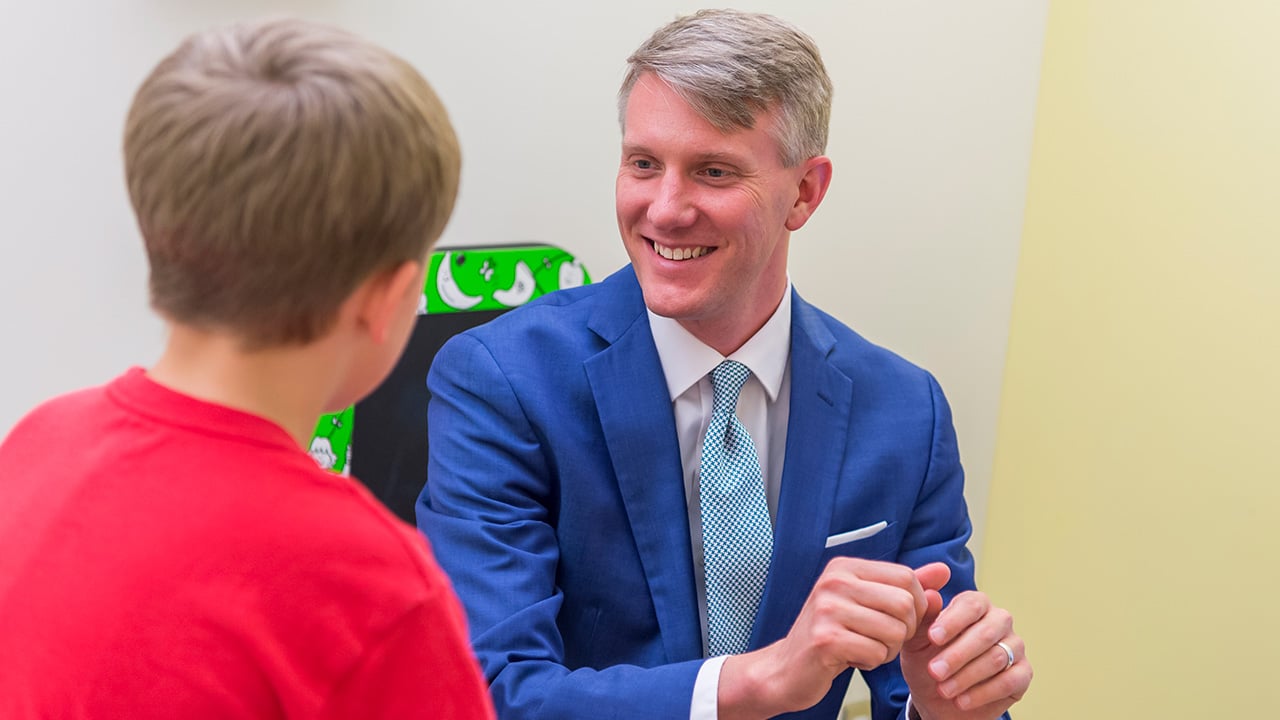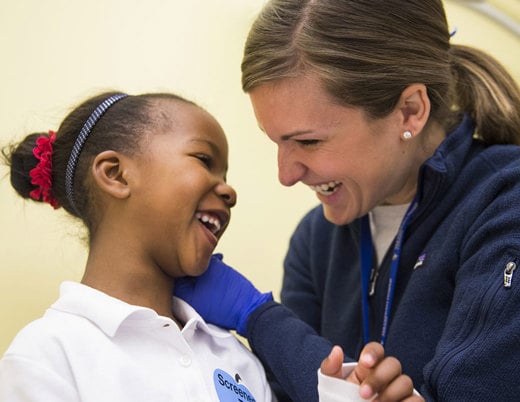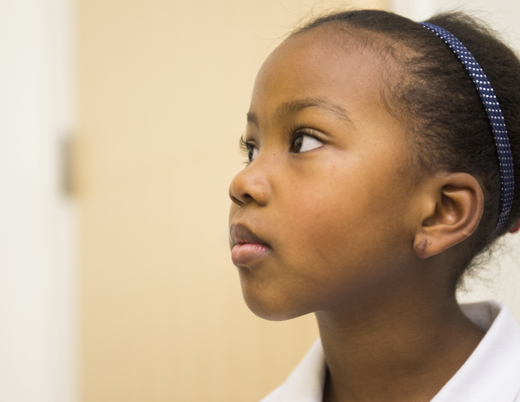Key takeaways
-
Most patients will survive WT and reach reproductive age.
-
Chemotherapy or radiotherapy treatments can result in gonadal damage.
-
FP options are largely experimental, and discussions should involve parents and patients.
Wilms tumor (WT), a childhood kidney cancer, has an overall survival rate of around 90%, which means most patients will reach reproductive age. Patients may be treated with chemotherapy or radiotherapy, which include risks such as gonadal damage that could affect fertility.
Most patients are diagnosed and treated before puberty, but treatment decisions should consider future fertility. Fertility preservation (FP) options for young patients are now available, yet many are still experimental and largely reserved for patients at risk for gonadal damage.
This paper is a result of a collaboration between the Children's Oncology Group (COG) member institutions and Societe Internationale D'oncologie Pediatrique (SIOP). Co-author Nicholas Cost, MD, a member of both organizations. He is co-director of the Surgical Oncology Program at Children's Hospital Colorado and one of the few pediatric urologists in the world fellowship-trained in urologic oncology.
This review offers:
- Review of evidence on future fertility after WT treatment
- Options, considerations and recommendations for FP for these patients
Fertility importance in childhood and adolescent cancer patients
Surveys of the attitudes of parents and children with cancer and adolescent young adult (AYA) patients regarding FP related to cancer diagnosis found:
- Almost all AYA patients and parents are aware of significant fertility risks of treatment
- FP is important to most but only 20% are willing to take FP actions;
- Barriers to FP
- 50% limited access
- 33% of males and 50% of females had health-related concerns;
- 33% personal concerns
- Barriers to FP
- Many regretted deciding not to pursue FP
- Regret was higher for those who were unaware of their options, or who were made aware too late
- >50% felt a moderate to high amount of concern for the negative impact of infertility
- Greater concerns were associated with an increased likelihood of depression, and low quality of life
Considerations for providers
- Early fertility discussions are important to both males and females with Wilms tumor
- Adequate fertility counseling is crucial
Wilms tumor therapy and oncologic outcomes
Most WT patients are cured with surgery and two-drug chemotherapy with low gonadotoxic potential. The few WT patients who relapse almost always face intensive therapy with alkylating agents.
COG and SIOP protocols for high-risk WT patients reduce the risk of relapse but can increase the possibility of infertility through exposure to alkylators, carboplatin and radiation therapy (RT).

General impact of chemotherapy on fertility
The differences in COG and SIOP approaches for WT present different logistical opportunities for FP. The COG approach includes risk-adapted chemotherapy within 14 days of tumor resection, leaving a short window of time for decision-making and FP.
The SIOP approach includes preoperative chemotherapy – with no gonadotoxic agents -- immediately after confirmation. Post-surgery RT or chemo is well anticipated, allowing for FP.
Considerations for providers
- Prior chemotherapy is not an absolute contraindication for ovarian tissue cryopreservation and testicular biopsy
- Impact on future fertility is determined by cumulative doses of chemotherapy agents
Fertility risks for female Wilms tumor survivors
Ovarian damage from chemotherapeutic agents can result in:
- Delayed/absent/arrested puberty
- Diminished ovarian reserve (DOR)
- Premature ovarian insufficiency (POI)
- Infertility in post-pubertal individuals
Alkylating agents (cyclophosphamide and ifosfamide) have a dose-related impact female reproductive health.
- Key risk predictors:
- Cumulative dose of radiotherapy and alkylating agents
- Age at exposure
- Inclusion of doxorubicin increases risk of cardiomyopathy during pregnancy
- Prior research findings include:
- POI associated with administration of high-dose cyclophosphamide in female cancer survivors
- Treatment with cyclophosphamide demonstrated lower chance of pregnancy; fertility decreased with dose increase
- DOR is potential window for posttreatment FP
Fertility risks for male WT survivors
- High cumulative doses of cyclophosphamide typically do not affect Leydig cell function, but men commonly experience germ cell failure.
- WT-specific research is limited; prior findings in male childhood cancer survivors include:
- 46% of 1,622 studied survivors self-reported infertility
- 55.6% of 304 studied survivors experienced laboratory-evaluated impaired gonadal function
- Significant decrease in likelihood of fathering a child reported by male survivors who received high cumulative cyclophosphamide compared those not exposed
Impact on fertility after radiotherapy for Wilms tumor
Radiotherapy is an established, effective treatment for select WT patients. Different areas are targeted depending on the treatment protocols and stage of WT. Gonadal exposure from RT varies:
- Whole lung: minimal exposure
- Whole abdominal: gonadal tissue may receive full prescription dose for a large primary tumor
- Flank: little to no direct exposure in males; variable exposure in females
- Depends on lesion size at diagnosis and patient age (influences location of ovaries)
- Novel Volumetric-Modulated Arc Therapy (VMAT) could reduce exposure to organs; gonadal toxicity has not been formally assessed
Previous published literature on impact of RT on fertility in WT survivors is limited and the patient sample size is small.
Findings include:
- Late effects of RT to abdominal pelvic region in young children may impair normal growth and development of irradiated pelvic bones, vasculature and organs including the uterus, all critical to successful gestation
- Radiation may result in decreased distensibility of the uterus, leading to preterm delivery
- Younger age at diagnosis may be associated with higher chance of being able to sire a child
- 5 Gy cumulative exposure to reproductive organs augments the risk of infertility by a factor of 1.6
- Adverse pregnancy outcomes have been attributed to uterine fibrosis, impaired placentation, vascular insufficiency, altered bone growth, scarring/adhesions, and/or genitourinary malfunction.
Considerations for providers
- To improve reproductive success, continue to limit RT dose to the adjacent organs at risk, including but not limited to the gonads.
- To optimize outcomes and expectations, parents should be educated and counseled on risk-benefit ratio of tumor control and late fertility risks with early involvement of endocrinology/fertility experts
Fertility preservation options for patients with Wilms tumor
Current FP options for WT patients, most of whom are prepubertal, are mainly experimental:
- No clinically standard methods for prepubertal males
- One option for prepubertal females

Ethics of fertility preservation for patients with Wilms tumor
- Pre-pubertal FP options involve invasive procedures, so ethical, cultural and religious issues must be considered
- While parents are the primary decision-makers for young patients, the child should receive age-appropriate information and their primary interest must be kept in mind
Impact of genetic susceptibility on fertility preservation
- Previous studies found female patients with similar oncologic treatment at the same age can have variable gonadal damage, suggesting genetic factors modify the gonadotoxicity of treatment
- Two genome-wide association studies (GWAS) studies have explored genetic susceptibility of cancer treatment-related gonadal damage in girls
- The field is new and should be further explored
- The role of genetic variation in male infertility in the general population is unclear and has not been studied extensively in male childhood cancer patients
- Risks should still be mentioned in counseling of newly diagnosed or relapsed WT patients
Conclusions from this international special report
- With improved survival for children treated for WT, there is an associated risk of late effects, including fertility impairment.
- Fertility concerns in WT survivors may be related to treatment or underlying patient-specific risk factors.
- Fortunately, surgical intervention for primary WT rarely directly affects reproductive organs.
- FP prior to treatment is difficult due to the young age of most children with WT, but there are experimental testicular and ovarian tissue harvest options.
- The treating team should initiate discussions about fertility preservation –– offering oncofertility consultation when available –– as the standard of care for all patients with WT.
Featured Researchers

Nicholas Cost, MD
Co-director of Surgical Oncology
Department of Pediatric Urology
Children's Hospital Colorado
Associate professor
Surgery-Urology
University of Colorado School of Medicine





 720-777-0123
720-777-0123










